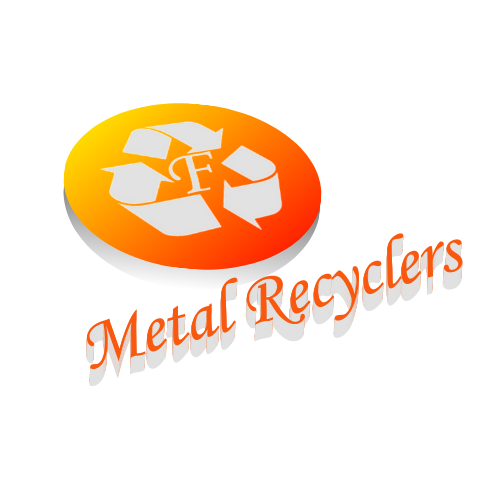Whether it’s a light scratch from a parking mishap or a deeper scrape from brushing against a wall, fast metal recyclers car scrapes recycler are among the most common and frustrating vehicle damages. Fortunately, modern car repair services offer convenient solutions—including pickup and delivery options—and there are smart ways to get the best value for your money.
In this guide, we’ll walk you through:
- The typical car scrape repair process
- Pickup and drop-off services offered by repair shops
- How to compare prices and choose the best deal
Let’s dive in.
What Is a Car Scrap?
A car scrape recycler is surface damage typically caused by contact with an object such as a wall, pole, or another vehicle. Scrapes can range from minor clear coat scratches to deep gouges that expose the metal underneath.

Common causes include:
- Misjudging tight parking spaces
- Rubbing against barriers or walls
- Other cars opening doors into yours
- Road debris like branches or gravel
Regardless of how it happens, it’s important to fix a scrape promptly. Even a small surface scrape can lead to paint peeling, rust, and decreased resale value if left untreated.
The Car Scrape Repair Process
Depending on the severity of the scrape, the repair process can vary. Here’s a general step-by-step overview of what happens when you take your car to a professional body shop:
1. Initial Assessment
The technician will examine the scrape to determine the depth and extent of the damage. Scrapes are typically categorized into:
- Surface (clear coat only)
- Paint layer damage
- Primer or bare metal exposure
2. Cleaning the Area
Before any work begins, the scraped area is cleaned to remove dirt, wax, and debris. This ensures the surface is prepped for repair.
3. Sanding and Smoothing
For deeper scrapes, the damaged area is lightly sanded to remove loose paint and smooth the surface.
4. Filling (If Needed)
If the scrape has caused a gouge or indentation, a filler may be applied to even out the surface.
5. Paint Matching and Application
Using your vehicle’s paint code, technicians apply color-matched paint in thin layers. This step requires skill to ensure the paint blends seamlessly with the surrounding area.
6. Clear Coat and Polishing
Once the paint is dry, a clear coat is added to protect the repair and give it a glossy finish. The area is then polished to match the rest of the car’s surface.
7. Final Inspection
A final check ensures that the repair is smooth, invisible, and durable.
Total time: 1 to 3 days depending on the damage and shop workload.
Pickup and Drop-Off Car Scrape Repair Services
One of the most convenient trends in the auto repair industry is pickup and drop-off service—especially for minor cosmetic repairs like scrapes.

How It Works:
- You book online or by phone.
- A technician or driver picks up your car at your home or office.
- The repair center transports the car.
- Once the work is completed, they deliver it back to you—fully repaired and cleaned.
Benefits of Pickup Service:
- Time-saving – No need to take time off work or wait around.
- Safe and contactless – Great for busy professionals or those who prefer minimal contact.
- Convenient for non-drivable vehicles – If the damage affects drivability, pickup ensures your car gets safely to the shop.
Some mobile repair services even do the work on-site at your home or workplace if the damage is minor.
Getting the Best Deal on Car Scrape Repair Car Scrape Recycler
Auto body repair costs can vary significantly depending on the location, depth of damage, and repair provider. Here’s how to make sure you’re getting the best price without compromising on quality.
1. Get Multiple Quotes
Reach out to at least three repair shops or mobile services. Many offer free online estimates if you send them photos of the damage.
Tip: Use online platforms like Yelp, Google Reviews, or specialized services like YourMechanic or AutoGuru to compare prices and customer feedback.
2. Know What Affects Pricing
Factors that influence car scrape repair cost include:
- Depth of scrape – Deep damage costs more.
- Panel type – Bumpers and doors may be more complex to fix.
- Paint color – Custom or metallic paints are more expensive.
- Labor rates – Vary by region and shop.
3. Ask About Paintless Options
For shallow scrapes, paintless scratch repair techniques may be available. These are faster and more affordable.
4. Look for Discounts or Packages of car scrape recycler
Some repair centers offer promotions like:
- First-time customer discounts
- Multi-panel repair packages
- Free pickup/drop-off service with repair
5. Check for Insurance Coverage
If the Car Scrape Recycler was caused by a collision or third party, your insurance may cover it—though you’ll want to weigh the deductible against the out-of-pocket cost.
When to Choose DIY vs. Professional Repair in car scrape recycler
DIY kits are available for surface scrapes and typically cost $20–$50. However, they work best for:
- Clear coat damage
- Very light, surface-level scratches
For anything deeper or on a visible panel, professional repair is usually a better investment—both in terms of appearance and long-term durability.
Final Thoughts
A car scrape doesn’t have to be a major headache. Thanks to modern repair techniques and convenient pickup services, getting your vehicle looking brand new is easier than ever. By understanding the process, taking advantage of mobile services, and shopping smart, you can fix scrapes quickly—without spending a fortune.
Remember:
- Fixing a scrape early prevents worse damage (like rust).
- Pickup and drop-off services save you time and stress.
- Comparing quotes and knowing what to ask can save you hundreds.
So, whether it’s a minor blemish or a deep scrape, take action today to restore your car’s appearance and value—on your schedule and budget.
